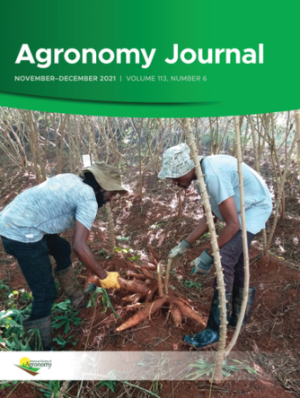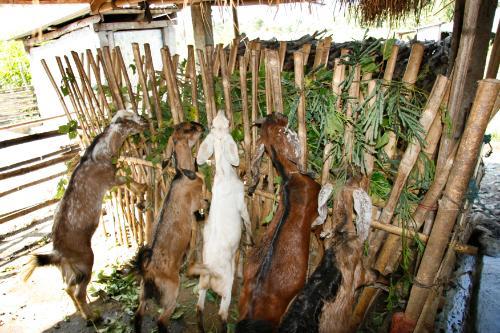The Feed Study
Ethiopia & Burkina Faso, 2018 - 2023
The Feed Study is part of the project EQUIP – Strengthening smallholder livestock systems for the future, funded by the Bill & Melinda Gates Foundation.
Principal Investigator (PI) and Lead Institution
Dr. Adegbola Adesogan, University of Florida
Coordinator
Dr. Mulubrhan Balehegn Gebremikael, University of Florida
Collaborator Institutions and Co-PIs
- University of Florida: Dr. Geoff Dahl, Co-PI, Dr. Jose Dubeux, Dr. Esteban Rios, Dr. Ken Boote
- International Livestock Research Institute: Dr. Alan Duncan, Dr. Amole Tunde
- Institute de l’Environnement et de Recherche Agricole INERA-Burkina Faso: Dr. Isidore Gnanda, Dr. Nouhoun Zampaligre, Dr. Andre Kiema
- University of California-Davis: Dr. Ermias Kebreab
- ACDI/VOCA (2018-2021): Dr. Carl Birkelo
- Ethiopian Institute of Agricultural Research: Dr. Fekede Feyissa, Dr. Aemiro Ashagrie
- Hawassa University, Ethiopia: Professor Adugna Tolera
Results

- Amole, T. et al. 2021. Livestock feed resources in the West African Sahel
- Balehegn, M. et al. T. 2021. Forage conservation in sub-Saharan Africa: Review of experiences, challenges, and opportunities
- Balehegn, M. et al. 2021. The use of near-infrared reflectance spectroscopy for forage nutritive value analysis in sub-Saharan African countries: Challenges and opportunities
- Bedaso, N. H. et al. 2021. Effect of fertilizer inputs on productivity and herbage quality of native pasture in degraded tropical grasslands
- Boote, K. J. et al. 2021. Fodder development in sub-Saharan Africa: An Introduction
- Feyisa, T. 2021. Assessment of fodder resources in Ethiopia: Biomass production and nutritional value
- Harris-Coble, L. et al. 2021. Gender and livestock feed research in developing countries: A review
- Mekonnen, K. et al. 2021. Feed and forage development in mixed crop–livestock systems of the Ethiopian highlands: Africa RISING project research experience
- Ouédraogo, A. et al. 2022. Assessment of peri-urban livestock producers’ willingness to pay for improved forages as cash crops
- Zampaligre, N. et al. 2021. Herbage accumulation and nutritive value of cultivar Mulato II, Congo grass, and Guinea grass cultivar C1 in a subhumid zone of West Africa
- Zampaligre, N. et al. 2021. Fodder biomass, nutritive value, and grain yield of dual-purpose Pearl Millet, Sorghum and Maize cultivars across different agro-ecologies in Burkina Faso
Abdu, Y., Tolera, A., Nurfeta, A., and Bradford, B. 2023. Effect of locally available and commercial preservatives on nutrient content, organic matter digestibility and microbial changes of wet brewers' grain. Veterinary Integrative Sciences, 21(2), 273-289. https://doi.org/10.12982/VIS.2023.022
Ashagrie, A.K., Feyissa, F., Kebede, G., Faji, M., Mohammed, K., Mengistu, G., Kitaw, G., Dejene, M., Geleti, D., Minta, M., Rios, E.F., Balehegn, M., and Adesogan, A.T. 2023. Enhancing dairy productivity through best bet feeding interventions under smallholders in the central highlands of Ethiopia. Front. Anim. Sci. 4:1118437. https://doi.org/10.3389/fanim.2023.1118437
Balehegn, M., Duncan, A., Tolera, A., Ayantunde, A.A., Issa, S., Karimou, M., Zampaligré, N., André, K., Gnanda, I., Varijakshapanicker, P., Kebreab, E., Dubeux, J., Boote, K., Minta, M., Feyissa, F., and Adesogan, A.T. June 2020. Improving adoption of technologies and interventions for increasing supply of quality livestock feed in low- and middle-income countries. Global Food Security, Volume 26, 100372. https://doi.org/10.1016/j.gfs.2020.100372
Resources
- Article. August 2022. Storing cattle feed can improve milk and meat yields: why African farmers aren’t doing it. The Conversation, Africa edition.
- Blog post. November 2021. Near-infrared reflectance spectroscopy: the tech that’s taking the guess-work out of assessing feed quality. CGIAR Research Program on Livestock.
- Blog post (in French). November 2021. Logiciel de rationnement des petits ruminants : Le projet Equip forme les formateurs. Miroir de l’info.
- Blog post (in French). September 2021. Analyse de la qualité nutritionnelle des aliments pour animaux : l’INERA doté d’un laboratoire de spectrométrie dans le proche Infrarouge. Miroir de l’info.
- Blog post. June 2021. Burping sheep and Africa’s first GreenFeed project to measure their emissions
- Presentation. April 21, 2021. Feed and Fodder Learning Session
- Literature review. Amole, T.A. and Ayantunde, A.A. 2019. Livestock feed resources in West African Sahel: A review. Nairobi, Kenya: ILRI.
Summary
The quantity and quality of livestock feed remains one of the most critical challenges to smallholder livestock farmers. Feed typically accounts for 50 to 80 percent of the total livestock production cost. Limited quality and quantity of feed hinders smallholder livestock producers by reducing the productivity of their livestock, as well as decreasing the economic benefits of livestock production. Although genetic, management, and health interventions all have the potential to increase livestock productivity, the benefits of these interventions are reduced, and are ultimately unsustainable, without quality and affordable animal feed.
The Feed Study focused on improving the quality and quantity of animal feed, specifically for dairy cows in Ethiopia and for sheep and goats in Burkina Faso. These species of livestock are particularly important for poor livestock producers, and improving the productivity and profitability of these species is a priority for governments of the respective countries in order to reduce poverty, improve nutrition and promote resilience. Moreover, this work will also be applicable to other livestock species and have significant spillover impacts to other countries.
In recognition of the diverse challenges to improving animal feed quality and quantity, the Feed Study will work in five focal areas (click link for a leaflet):
- Creating an Inventory of Feed Resources Through a Landscape Analysis
- French version: Inventaire des Ressources Alimentaires à travers une Analyse des Paysages des Aliments
- Increasing Yield, Quality and Preservation of Fodder with Location-Specific Improved Forages for Different Agroecologies
- French version: Amélioration des rendements, de la qualité et la preservation des fourrages à l’aide de variétés améliorées
pour différentes agroécologies
- French version: Amélioration des rendements, de la qualité et la preservation des fourrages à l’aide de variétés améliorées
- Determining and Meeting Nutrient Requirements of Indigenous Livestock with Balanced Rations
- French version: Détermination et Atteinte des Besoins Nutritifs des Races locales d’Animaux à l’aide des Rations
équilibrées
- French version: Détermination et Atteinte des Besoins Nutritifs des Races locales d’Animaux à l’aide des Rations
- Improving Capacity to Analyze the Nutritional Value of Livestock Feeds with Near Infrared Reflectance Spectroscopy
- French version: Améliorer la Capacité d’Analyse de la Qualité Nutritionnelle des Aliments à l’aide du SPIR (Spectrométrie par réflectance proche de l’Infra
Rouge)
- French version: Améliorer la Capacité d’Analyse de la Qualité Nutritionnelle des Aliments à l’aide du SPIR (Spectrométrie par réflectance proche de l’Infra
- Examining Effects of Synergizing Feed, Management and Genetic Interventions on Milk Production and Health of Dairy Cows in Ethiopia
The Feed Study began in 2018 and concluded its research in 2022.
More Information
 October 2020 research update FEED VGM (Virtual General Meeting)
October 2020 research update FEED VGM (Virtual General Meeting)

This study is funded by the Bill & Melinda Gates Foundation as part of the EQUIP project.
Feed the Future Innovation Lab for Livestock Systems is part of Feed the Future





